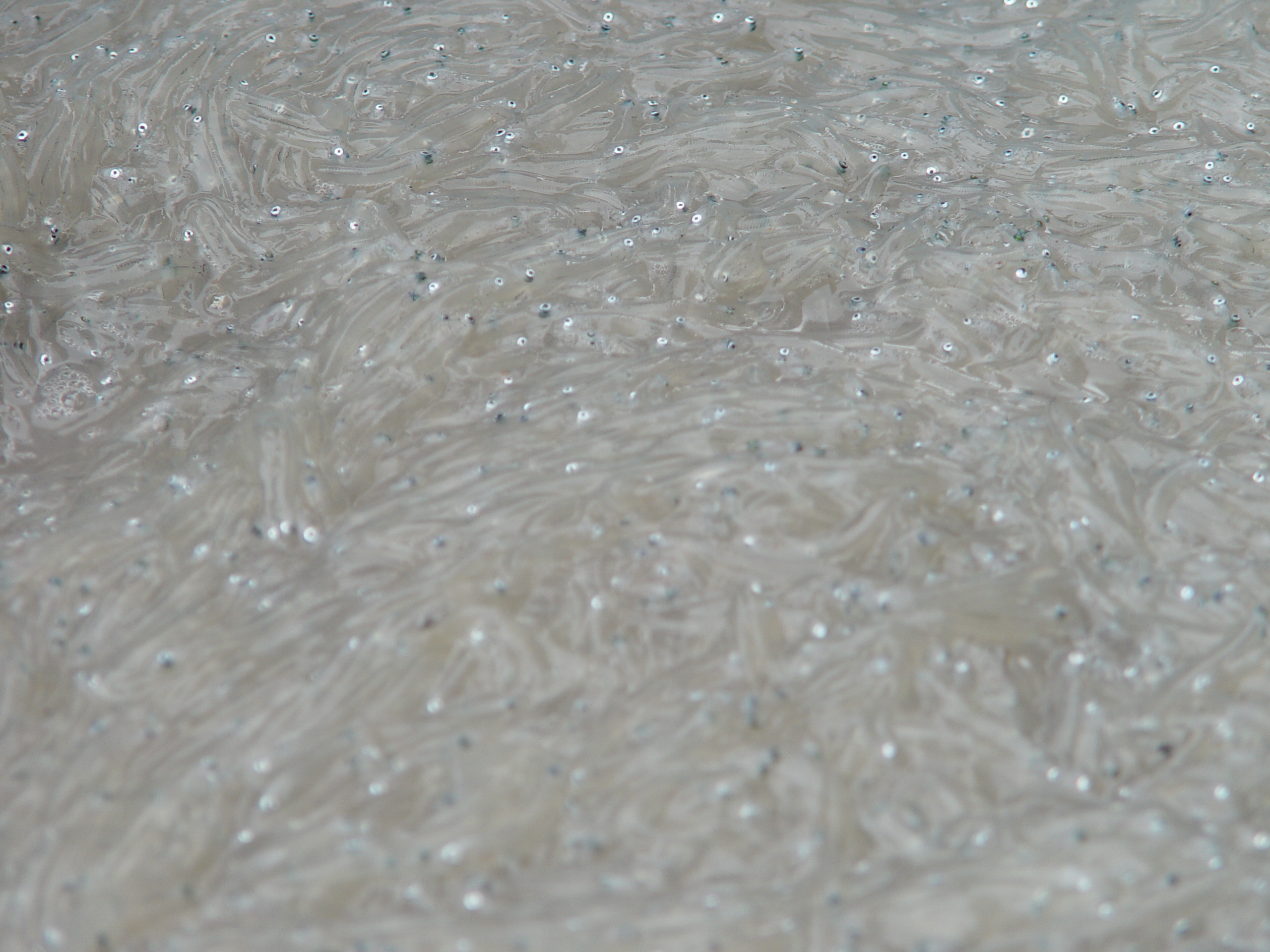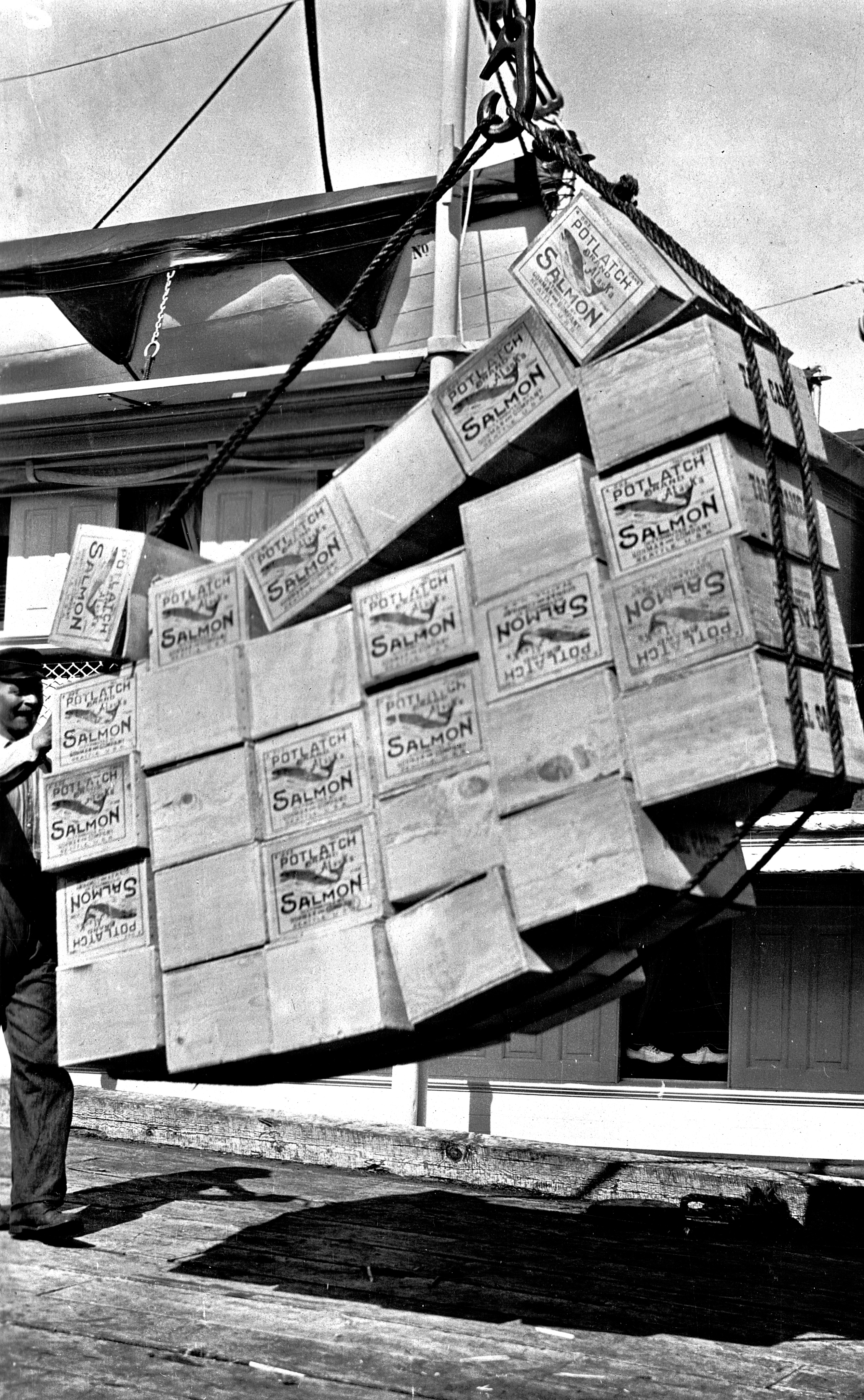|
Salmon Escapement
Salmon escapement is the amount of a salmon population that does not get caught by commercial or recreational fisheries and return to their freshwater spawning habitat. Estimates of these amount are calculated with statistical analysis using data collected during that particular run season. These estimations help produce fishing quotas for the return year of the juveniles born for that years run, or can be used to determine the health of a salmon stock. Estimating escapement for salmon can be done several ways: The most commonly used method is the area-under-the-curve model, and other methods include the change-in-ratio method, carcass-counting surveys, and weir-count surveys. Escapement goals Biological Escapement Goals (BEGs) are the number of returning salmon that would provide the largest possible amount of take while ensuring that enough salmon will successfully spawn, so that their offspring will replace the harvested amount in future runs. A BEG model is applied when a fi ... [...More Info...] [...Related Items...] OR: [Wikipedia] [Google] [Baidu] |
Salmon
Salmon () is the common name for several list of commercially important fish species, commercially important species of euryhaline ray-finned fish from the family (biology), family Salmonidae, which are native to tributary, tributaries of the North Atlantic (genus ''Salmo'') and North Pacific (genus ''Oncorhynchus'') basin. Other closely related fish in the same family include trout, Salvelinus, char, Thymallus, grayling, Freshwater whitefish, whitefish, lenok and Hucho, taimen. Salmon are typically fish migration, anadromous: they hatch in the gravel stream bed, beds of shallow fresh water streams, migrate to the ocean as adults and live like sea fish, then return to fresh water to reproduce. However, populations of several species are restricted to fresh water throughout their lives. Folklore has it that the fish return to the exact spot where they hatched to spawn (biology), spawn, and tracking studies have shown this to be mostly true. A portion of a returning salmon run ma ... [...More Info...] [...Related Items...] OR: [Wikipedia] [Google] [Baidu] |
Fisheries
Fishery can mean either the enterprise of raising or harvesting fish and other aquatic life; or more commonly, the site where such enterprise takes place ( a.k.a. fishing ground). Commercial fisheries include wild fisheries and fish farms, both in freshwater waterbodies (about 10% of all catch) and the oceans (about 90%). About 500 million people worldwide are economically dependent on fisheries. 171 million tonnes of fish were produced in 2016, but overfishing is an increasing problem — causing declines in some populations. Because of their economic and social importance, fisheries are governed by complex fisheries management practices and legal regimes that vary widely across countries. Historically, fisheries were treated with a " first-come, first-served " approach, but recent threats by human overfishing and environmental issues have required increased regulation of fisheries to prevent conflict and increase profitable economic activity on the fishery. Modern jurisdicti ... [...More Info...] [...Related Items...] OR: [Wikipedia] [Google] [Baidu] |
Fishing Quota
Catch share is a fishery management system that allocates a secure privilege to harvest a specific area or percentage of a fishery's total catch to individuals, communities, or associations. Examples of catch shares are individual transferable quota (ITQs), individual fishing quota (IFQs), territorial use rights for fishing (TURFs), limited access privileges (LAPs), sectors (also known as cooperatives), and dedicated access privileges (DAPs). Catch shares provide long-term secure privileges to participants and, in theory, an incentive for efficient, sustainable use of fish stocks. Actual outcomes in terms of efficiency and ecological sustainability are varied, based on design and implementation of the program. Catch share programs generally fall into two categories. Quota-based programs, like ITQs, establish a fishery-wide catch limit, assign portions (or shares) of the catch to participants and hold participants directly accountable to stay within the catch limit. Area-based prog ... [...More Info...] [...Related Items...] OR: [Wikipedia] [Google] [Baidu] |
Juvenile Fish
Fish go through various life stages between fertilization and adulthood. The life of a fish start as spawned eggs which hatch into immotile larvae. These larval hatchlings are not yet capable of feeding themselves and carry a yolk sac which provides stored nutrition. Before the yolk sac completely disappears, the young fish must mature enough to be able to forage independently. When they have developed to the point where they are capable of feeding by themselves, the fish are called fry. When, in addition, they have developed scales and working fins, the transition to a juvenile fish is complete and it is called a fingerling, so called as they are typically about the size of human fingers. The juvenile stage lasts until the fish is fully grown, sexually mature and interacting with other adult fish. Growth stages Ichthyoplankton ''(planktonic or drifting fish)'' are the eggs and larvae of fish. They are usually found in the sunlit zone of the water column, less than 200 met ... [...More Info...] [...Related Items...] OR: [Wikipedia] [Google] [Baidu] |
Area-under-the-curve
In the field of pharmacokinetics, the area under the curve (AUC) is the definite integral of the concentration of a drug in blood plasma as a function of time (this can be done using liquid chromatography–mass spectrometry). In practice, the drug concentration is measured at certain discrete points in time and the trapezoidal rule is used to estimate AUC. Interpretation and usefulness of AUC values The AUC (from zero to infinity) represents the ''total drug exposure across time''. AUC is a useful metric when trying to determine whether two formulations of the same dose (for example a capsule and a tablet) result in equal amounts of tissue or plasma exposure. Another use is in the therapeutic drug monitoring of drugs with a narrow therapeutic index. For example, gentamicin is an antibiotic that can be nephrotoxic (kidney damaging) and ototoxic (hearing damaging); measurement of gentamicin through concentrations in a patient's plasma and calculation of the AUC is used to guide ... [...More Info...] [...Related Items...] OR: [Wikipedia] [Google] [Baidu] |
Weir
A weir or low head dam is a barrier across the width of a river that alters the flow characteristics of water and usually results in a change in the height of the river level. Weirs are also used to control the flow of water for outlets of lakes, ponds, and reservoirs. There are many weir designs, but commonly water flows freely over the top of the weir crest before cascading down to a lower level. Etymology There is no single definition as to what constitutes a weir and one English dictionary simply defines a weir as a small dam, likely originating from Middle English ''were'', Old English ''wer'', derivative of root of ''werian,'' meaning "to defend, dam". Function Commonly, weirs are used to prevent flooding, measure water discharge, and help render rivers more navigable by boat. In some locations, the terms dam and weir are synonymous, but normally there is a clear distinction made between the structures. Usually, a dam is designed specifically to impound water behind ... [...More Info...] [...Related Items...] OR: [Wikipedia] [Google] [Baidu] |
Sustainable Yield
The sustainable yield of natural capital is the ecological yield that can be extracted without reducing the base of capital itself, i.e. the surplus required to maintain ecosystem services at the same or increasing level over time. The term only refers to resources that are renewable in nature as extracting non-renewable resources will always diminish the natural capital. The sustainable yield of a given resource will generally vary over time with the needs of the ecosystem to maintain itself, e.g. a forest that has recently suffered a blight or flooding or fire will require more of its own ecological yield to sustain and re-establish a mature forest. While doing so, the sustainable yield may be much less. The term sustainable yield is most commonly used in forestry, fisheries, and groundwater applications. Sustainable yield is an important component of sustainable forest management. In the forestry context it is the largest amount of harvest activity that can occur without degra ... [...More Info...] [...Related Items...] OR: [Wikipedia] [Google] [Baidu] |
Alaska Salmon Fishery
The Alaska salmon fishery is a managed fishery that supports the annual harvest of five species of wild Pacific Salmon for commercial fishing, sport fishing, subsistence by Alaska Native communities, and personal use by local residents. The salmon harvest in Alaska is the largest in North America and represents about 80% of the total wild-caught catch, with harvests from Canada and the Pacific Northwest representing the remainderEcotrust 2005, Policies Governing Alaska’s Salmon Management In 2017 over 200 million salmon were caught in Alaskan waters by commercial fishers, representing $750 million in exvessel value. Salmon fishing is a nearly ubiquitous activity across Alaska, however the most valuable salmon fisheries are in the |
Maximum Sustainable Yield
In population ecology and economics, maximum sustainable yield (MSY) is theoretically, the largest yield (or catch) that can be taken from a species' stock over an indefinite period. Fundamental to the notion of sustainable harvest, the concept of MSY aims to maintain the population size at the point of maximum growth rate by harvesting the individuals that would normally be added to the population, allowing the population to continue to be productive indefinitely. Under the assumption of logistic growth, resource limitation does not constrain individuals' reproductive rates when populations are small, but because there are few individuals, the overall yield is small. At intermediate population densities, also represented by half the carrying capacity, individuals are able to breed to their maximum rate. At this point, called the maximum sustainable yield, there is a surplus of individuals that can be harvested because growth of the population is at its maximum point due to the la ... [...More Info...] [...Related Items...] OR: [Wikipedia] [Google] [Baidu] |
Sustainable Fishery
A conventional idea of a sustainable fishery is that it is one that is harvested at a sustainable rate, where the fish population does not decline over time because of fishing practices. Sustainability in fisheries combines theoretical disciplines, such as the population dynamics of fisheries, with practical strategies, such as avoiding overfishing through techniques such as individual fishing quotas, curtailing destructive and illegal fishing practices by lobbying for appropriate law and policy, setting up protected areas, restoring collapsed fisheries, incorporating all externalities involved in harvesting marine ecosystems into fishery economics, educating stakeholders and the wider public, and developing independent certification programs. Some primary concerns around sustainability are that heavy fishing pressures, such as overexploitation and growth or recruitment overfishing, will result in the loss of significant potential yield; that stock structure will erode ... [...More Info...] [...Related Items...] OR: [Wikipedia] [Google] [Baidu] |




